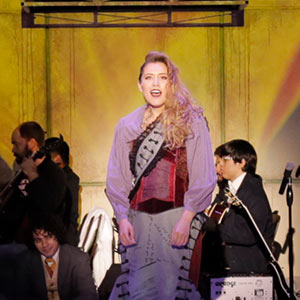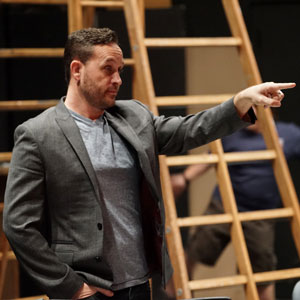'Crucible' Verdict: Stunning as Ever
— Los Angles Times - T.H. McCulloh - Saturday, October 2nd, 1993FULLERTON — When someone is hurt, he cries out. That's what Arthur Miller did when he wrote "The Crucible" in the 1950s, having suffered the outrageous terrors of the House Un-American Activities Committee, the paranoid Sen. Joseph McCarthy and such "patriotic" abettors as Richard Nixon.
"The Crucible" is a parable; by setting his story in Colonial Salem, Mass., Miller held a light to the chilling parallels between witch trials old and new. The play stunned audiences when it first opened in New York and is just as stunning today in this production at Fullerton College under Robert Jensen's vivid and muscular direction.
Triggered by children trying to hide their religious "indiscretion" of dancing in the woods, the Salem trials caused neighbor to accuse neighbor of witchcraft, husband to accuse wife. Before it was over, many lives had been forfeited and enmities were ingrained. The offense to reason had been full-blown.
The central figure in Miller's play is John Proctor, an honest, hard-working man who minds his own business but whose own indiscretion with his teen-age serving girl, Abigail Williams, undoes him.
THEATER REVIEW : 'Crucible' Verdict: Stunning as Ever : Fullerton College presents a powerful production of Arthur Miller's parable, written in the midst of the McCarthy era.
October 20, 1993|T.H. McCULLOH | SPECIAL TO THE TIMES
FULLERTON — When someone is hurt, he cries out. That's what Arthur Miller did when he wrote "The Crucible" in the 1950s, having suffered the outrageous terrors of the House Un-American Activities Committee, the paranoid Sen. Joseph McCarthy and such "patriotic" abettors as Richard Nixon.
"The Crucible" is a parable; by setting his story in Colonial Salem, Mass., Miller held a light to the chilling parallels between witch trials old and new. The play stunned audiences when it first opened in New York and is just as stunning today in this production at Fullerton College under Robert Jensen's vivid and muscular direction.
Triggered by children trying to hide their religious "indiscretion" of dancing in the woods, the Salem trials caused neighbor to accuse neighbor of witchcraft, husband to accuse wife. Before it was over, many lives had been forfeited and enmities were ingrained. The offense to reason had been full-blown.
The central figure in Miller's play is John Proctor, an honest, hard-working man who minds his own business but whose own indiscretion with his teen-age serving girl, Abigail Williams, undoes him.
Proctor is Miller, especially in his confusion during his trial and imprisonment whether to name names or to accept the fatal result of maintaining what's left of his honor. Although he lacks the vocal and physical authority for the role, Andrew Pinon is effective as Proctor, angry at the terror, wound tightly as a spring.
His major adversary, the McCarthy figure of the piece, is Deputy Gov. Danforth, and Gavin Carlton does have authority both vocally and physically. He also has a fine sense of the misguided power behind Danforth's rigid attitudes, his insistence that the hangings go on even after the public has turned on him.
Gregory Donald Gately is fine as the Rev. Hale, a deluded preacher who puts himself above all until the truth finally dawns, and Karen V. Curry is impressive as the aged, motivated Rebecca Nurse. (But as Rebecca's husband and a firebrand farmer, Ritch Barron and Zachary J. Hahn both use squeaky voices to relay great age. Director Jensen should have talked these actors out of such unconvincing tricks.) Joy McCoubrey is strong as Abigail, volatile and illogical in her immaturity; as the Rev. Parris, Mark S. Fleshner is suitably starchy at first and weak and confused by the end; Kimberly Jones offers nice shading and moments of power as the Proctors' current servant; Christine Gilb's calm resourcefulness is perfect for her role as Proctor's wife, and Allen Cutler's energy and authority stand out in the small role of the court clerk. Bill Meyer's set is stunning, especially under J. Michael Fimbres' masterly, painterly lighting.








